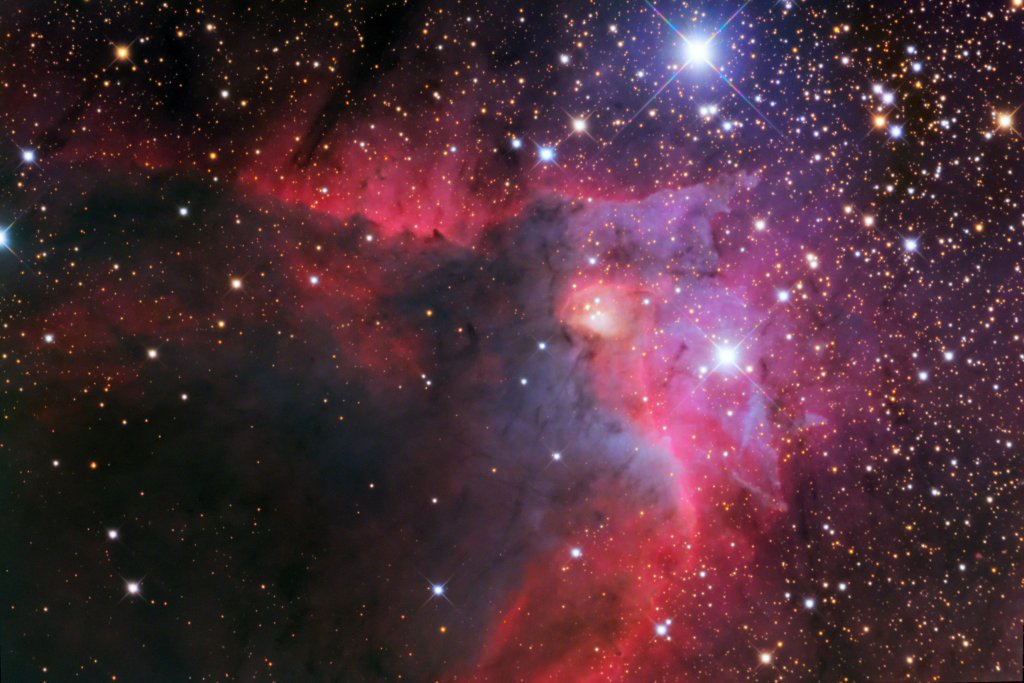

This incredible beautiful image captures one of the more complex nebulae to get a decent picture of; called SH2-155 (also known as the Caldwell 9 or the Cave Nebula).
The region itself is quite complex as well, containing several different nebulae of various types. First and foremost, we have a dim, but exceptionally bright diffused emission nebula, which in this case, is shrouded by thick pockets of interstellar dust. It alone has a radius of about 35 light-years. To put this in perspective, the closest planetary system to Earth – the Alpha Centauri triple star system – is located more than 4 light-years from Earth. Light would could go from our solar system to Alpha Centauri and back four times before light could make a one way trip from one side of this nebula to the other.
Secondly, we have star formation region that is shaped like a crescent. It is comprised of doubly ionized hydrogen molecules. Said ionization is caused by stars embedded in Cepheus B; a molecular cloud located on the outskirt of the region. Two in particular, dubbed HD 217061 and HD 217086, are responsible for the bulk of the work. Within this same region, we can see a reflection nebula, an emission nebula and a dark nebula. All of which are located about 2,400 light years away in the constellation of Cepheus.